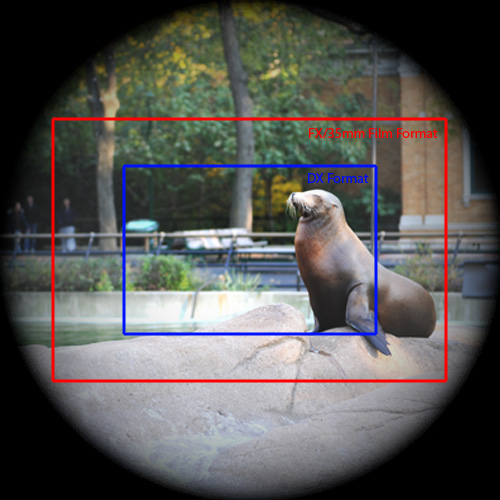What is vignetting?
All lenses project a circular image of the subject called the "circle of illumination". A camera (film or digital) crops a portion out of the center of the circle with it's image sensor or film. Since the sensor is rectangular it only actually photographs the middle part of the projected image circle.
Some lenses, notably circular image fish-eye lenses, produce a circle which completely fits into a 24x36 (approximate) capture area while other lenses have a very wide circle and can allow image tilt or shift in the frame with no light loss.

Notice how the corners in this shot are slightly darker than the subjects at the center even
though the sky would have been a constant tone. Slight light falloff in the lens causes vignetting.
Due to the physical properties of light passing through lenses it is impossible to get the same amount of light to the edges of the circle as the center ( the light going to the edges has to travel further, thus falls off more).This light fall off creates a very slight reduction of exposure on the corners of an image. This darkening in the corners is called vignetting.
Because light falls off (decreases) with the square of the distance it travels, light that travels farthest (from the lens to the edge of the circle versus from the lens to the center of the frame) will always be slightly reduced. All lenses exhibit some light fall off towards the edges but wide angle lenses as well as some telephoto zoom lenses are most prone due to their optical design. Further, a lens will generally show the most vignetting at it's widest aperture.
With smaller format cameras (such as DX format D-SLR's) the light fall off is less noticeable because only the center of the circle of illumination is used. With larger format cameras (like 35mm film or FX format camera's) more of the circle is used and there will be more difference between the center of the frame and the edges.

The illustration above simulates the circle of illumination of a lens. The rectangles
approximate the capture areas of various formats. Light falloff towards the edges
can be clearly seen. In some situations the corners of the image may be almost black. This is normal.
A second type of vignetting is called Mechanical Vignetting. This is simply vignetting caused by something blocking the light path such as a filters with too thick a mount or stacking several filters together. Also, using the wrong lens hood on a lens can cause mechanical vignetting.
Reducing Vignetting
In most shooting conditions (proper exposure, normal subjects, etc.) light falloff will be minimal. However, at some f/stops, focal lengths and with some lenses it is normal to have more light falloff. If you have vignetting with a particular shot change the lens focal length or aperture (lenses shot "wide open" will have the most vignetting, so stopping down a stop or two can help) until the vignetting is minimized. While vignetting may be easy to see and reproduce in a test situation in real world shooting it is generally invisible.
For those conditions where vignetting is obvious in a photo, View NX will automatically compensate for vignetting and Capture NX2 includes a Vignette Control slider feature to further reduce the visible effect without noticeably changing the overall image.
 |  |
Before Vignette Control | After Vignette Control |


0 comments:
Post a Comment